
Area Nature Centers Tap Maples for Syrup—and Fun!
April 4, 2021 | Topics: Places, Stories
By Eddee Daniel and Kacey Tait
Early spring is the season for tapping maple trees and making syrup from the harvested sap. Several local nature centers have maple sugaring operations with a variety of options for volunteers to help with as well as demonstrations for the public. I present you three of them. Riveredge Nature Center in Newburg sent a story about how to tell if your tree is a maple, along with some fun facts; and I visited both Riverside Park with the Urban Ecology Center and Whitnall Park with the Wehr Nature Center.
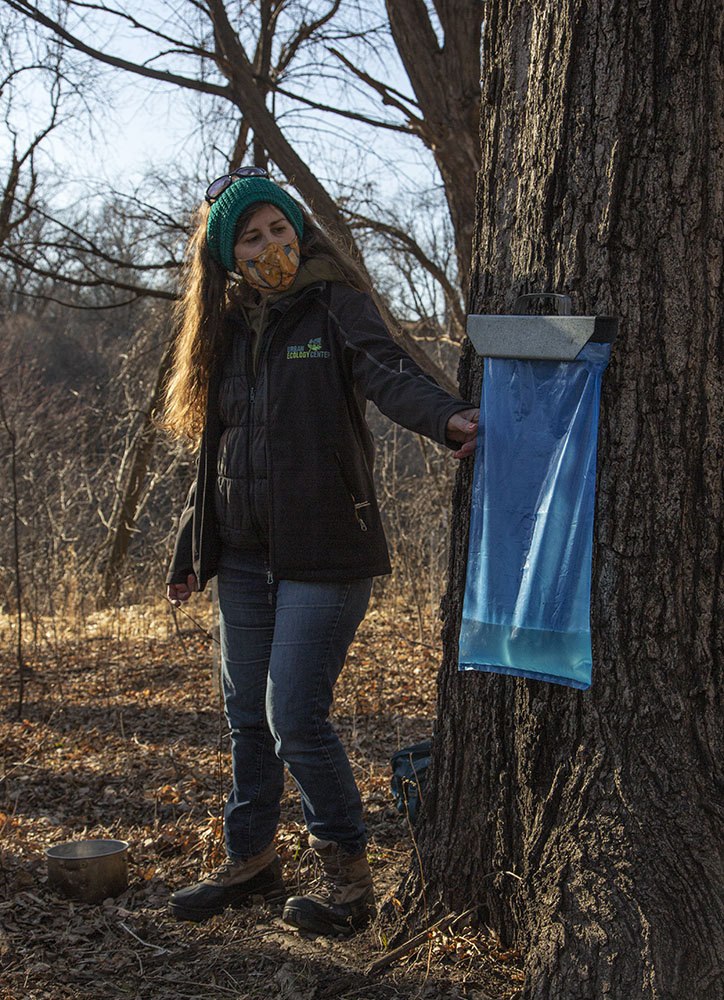
Did you know that it takes 40 gallons of maple sap to make a single gallon of syrup?
Here’s the story of why that is so, as told by Robin Wall Kimmerer in her book Braiding Sweetgrass…
“When Nanabazho, the Anishinaabe Original Man, our teacher, part man, part manido [spirit], walked through the world, he took note of who was flourishing and who was not, of who was mindful of the Original Instructions and who was not. He was dismayed when he came upon villages where the gardens were not being tended, where the fishnets were not repaired and the children were not being taught the way to live. He found the people lying beneath maple trees with their mouths wide open, catching the thick, sweet syrup of the generous trees. They had become lazy and took for granted the gifts of the Creator. He knew his responsibility, so he went to the river and dipped up many buckets of water. He poured the water into the maple trees to dilute the syrup. Today, maple sap flows like a stream of water with only a trace of sweetness to remind the people both of possibility and of responsibility. And so it is that it takes forty gallons of sap to make a gallon of syrup.”*
Urban Ecology Center
I joined a small group in Riverside Park for a maple sugaring demonstration led by Tory Bahe and Madeline Karian from the Urban Ecology Center. This year’s tapping was confined to a single Sugar Maple for the purposes of demonstration. They explained that the other maples in the park were being allowed to rest this season out.
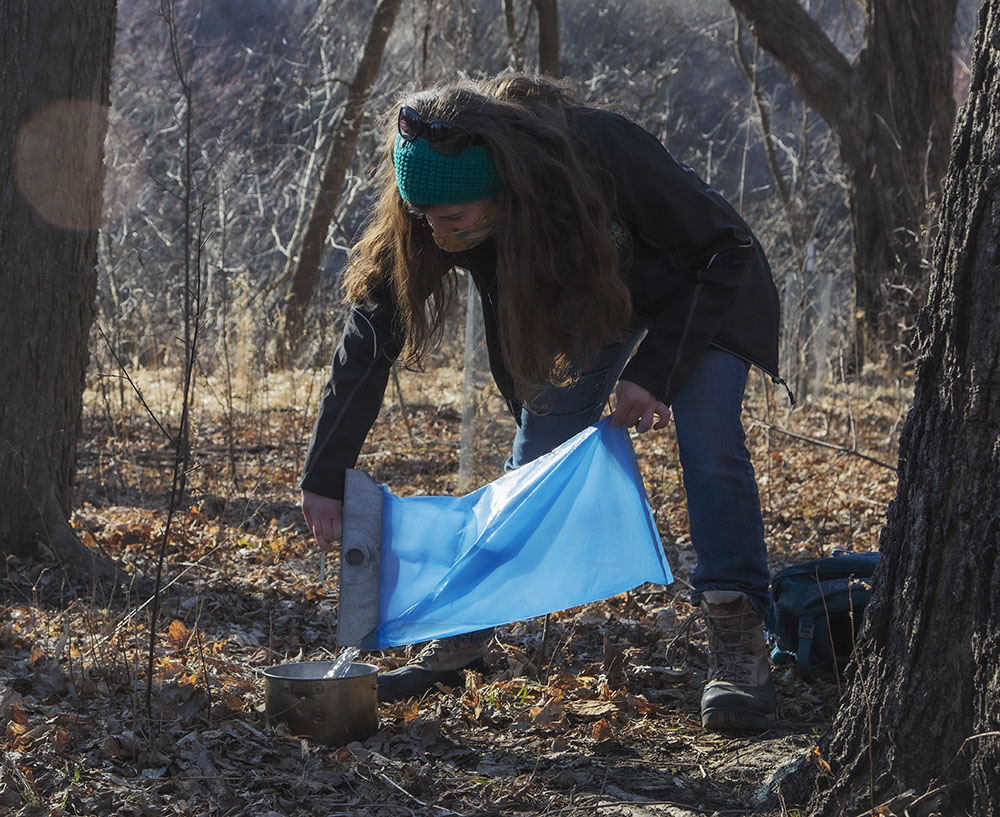
We learned how to tap using a spile pounded into the tree, which drips into the blue plastic bag suspended underneath. Buckets had been used traditionally, while commercial harvesters often use hoses to pipe the sap all the way from the trees to a collection site or sugar factory. In this case, we emptied the blue bag into a saucepan that we then took to a campfire for boiling.
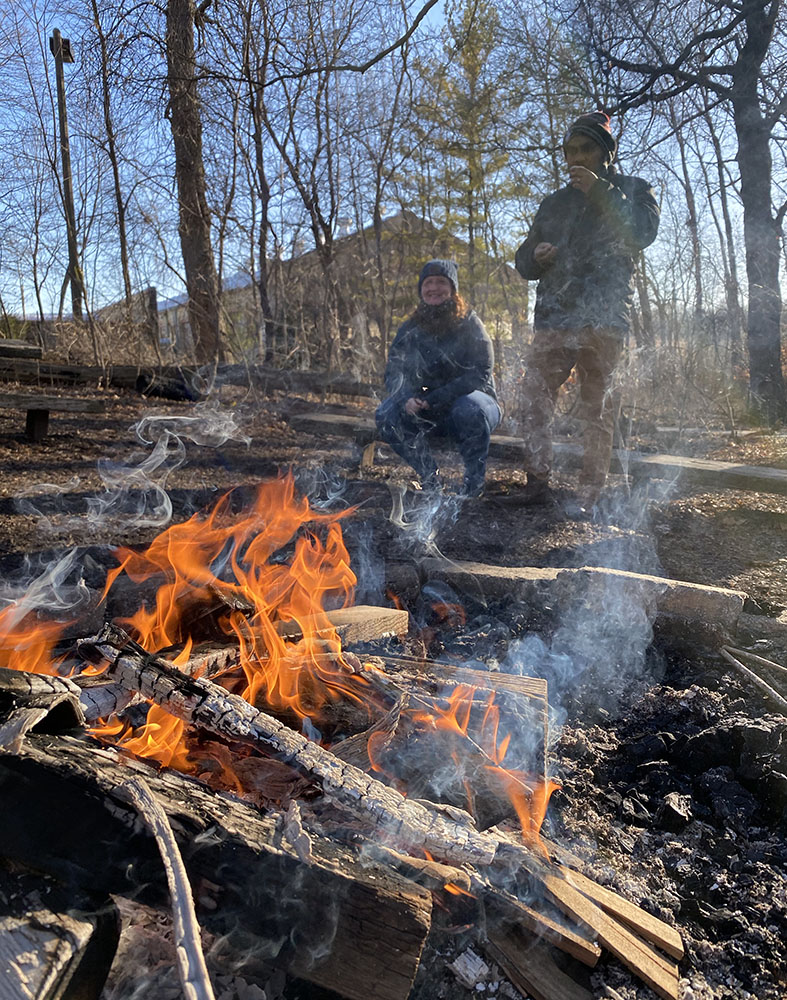

Participants were allowed to sample the sap. It is only mildly sweet, not much different than tasting water! While our sap began to boil over the campfire, we also poured pre-mixed pancake batter into individual-serving size pancake griddles, which we also placed on the campfire. It takes a very long time to boil the sap down to syrup—and our half-gallon or so of sap would only produce about a thimble-full in any case—so we enjoyed our pancakes with some of the syrup made previously.
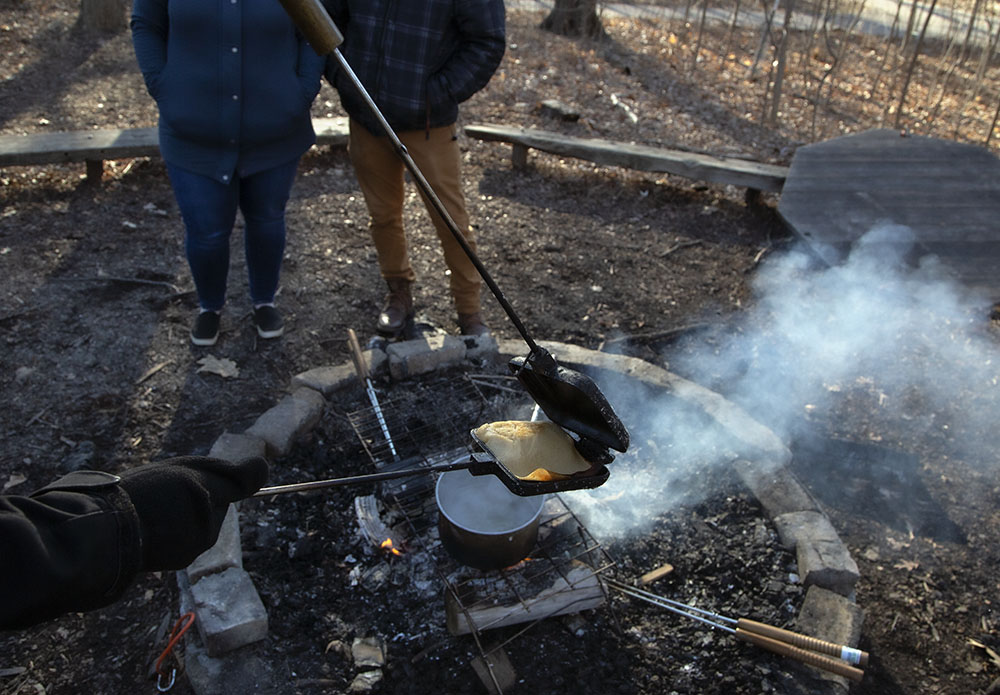
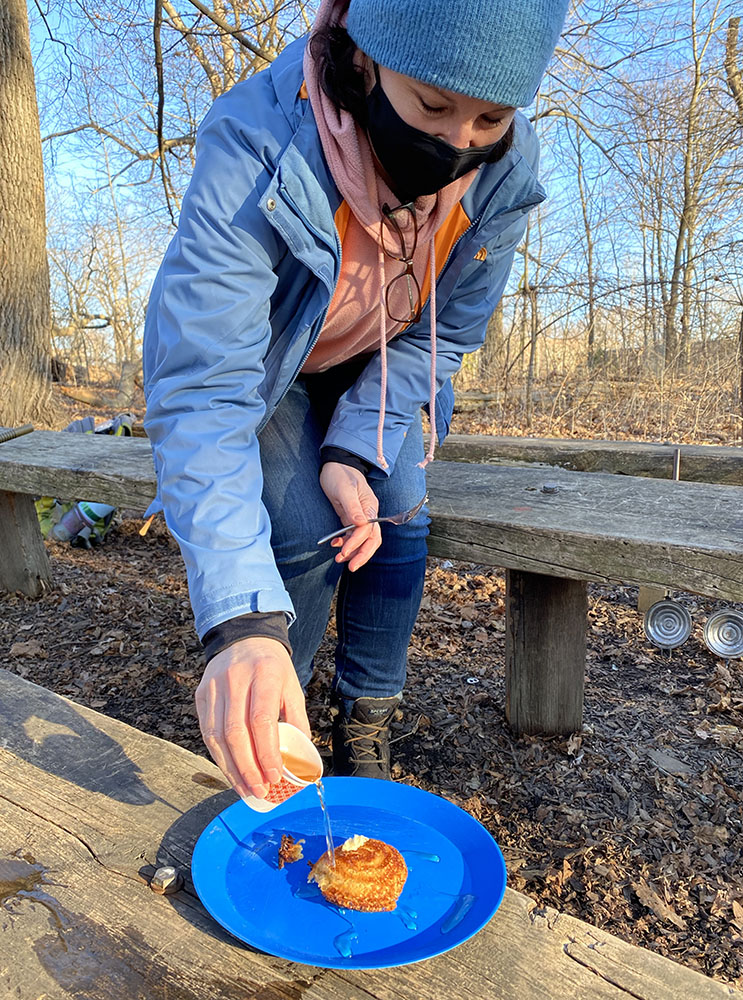
Wehr Nature Center
Pre-registered visitors to Wehr Nature Center during its annual Maple Sugar Weekend encountered a much bigger operation. Catering especially to families, tours of their maple sugar trail of up to ten people left every 15 minutes from 11:00 am until 4:00 pm. The first stop on the tour was a replica of a traditional maple sugaring camp where Howard Aprill, impersonating pioneer maple harvester Andrew Pettigrew, regaled the group with stories and explained the intricacies of harvesting the sap.


Subsequent stations had hands-on activities for the youngsters and young-at-heart, such as how to drill a tap hole and tap in a spile. There was a boil-down and filtering demonstration and a campfire with stories about Native American origins of maple sugaring. Although the usual pancake making and eating was suspended due to the pandemic, participants left with syrup samples and other maple sugaring swag.


Riveredge Nature Center
How to tell if your tree is a Maple
By Kacey Tait
Many types of trees can be tapped for sap, but only Sugar Maples (Acer saccharum) are renowned for having the highest sugar content. Although 2% sugar doesn’t seem like much, tapping from a sugar maple saves you a little bit of work and is a great starter tree before experimenting with other syrup varieties.
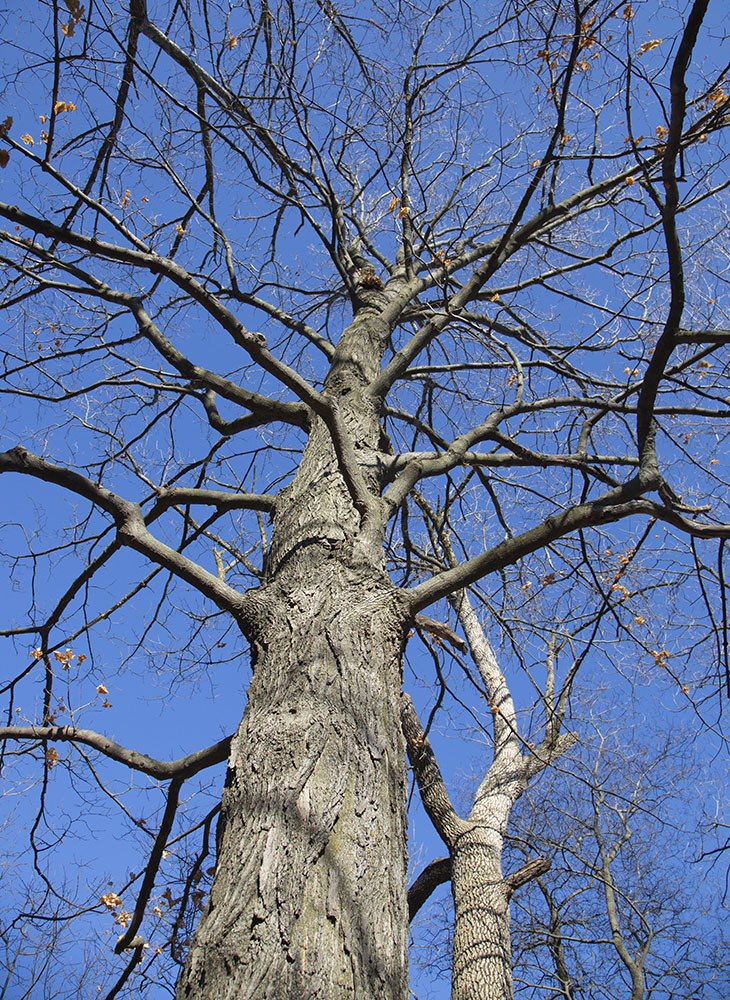
Riverside Park.
But how do you know if you have a Sugar Maple on your property?
Even in winter, there are plenty of signs to look for:
Bark: Medium grayish in color that will darken as they age. Bark is separated into tight vertical plates or scales.
Branching: All maples have opposite branching, which means they grow out in pairs that mirror each other. Other trees (dogwood, ash) have this branching type too, so look for additional clues!
Buds: Just like the branches, new buds come out opposite of one another too. They are sharp, slender and brown.
Signs from last year:
Leaves – Resemble the shape of a hand with five main lobes that spread from a central point. Leaf edges are smooth and tips almost look like they’re “dripping.” Leaves turn various shades of burnt orange, yellow, and red in autumn.
Fruit – Paired seeds called samaras (or helicopters) spin down in late summer and autumn.

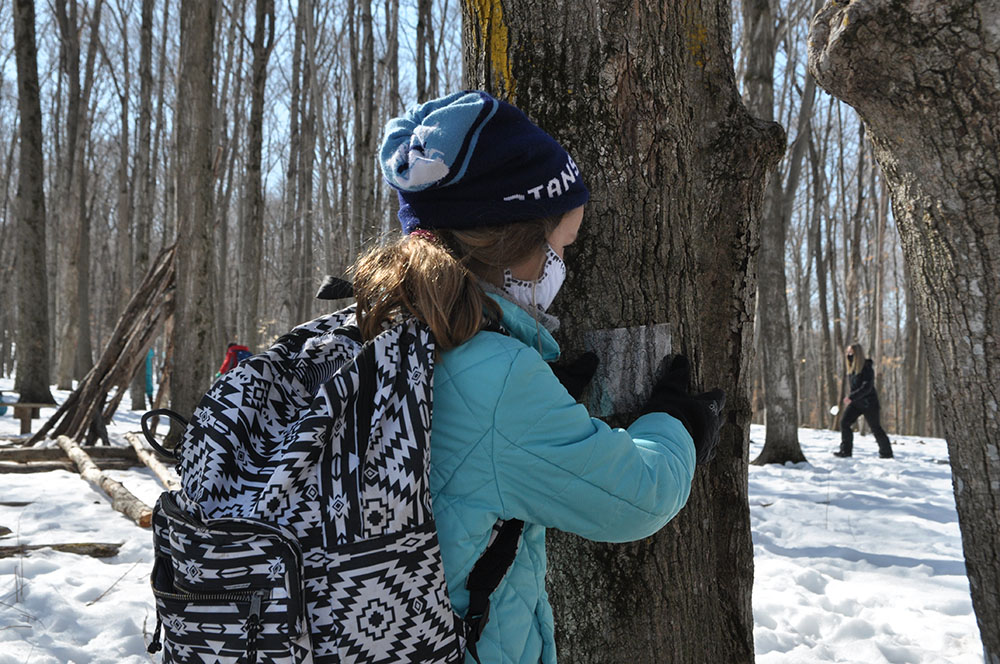
Fun Maple Facts
Maple trees existed when dinosaurs roamed the Earth – 100 million years ago.
In optimum conditions maples can survive for 300 years.
There are 128 varieties of maples. Nearly half of all maple species have an uncertain future due to habitat loss.
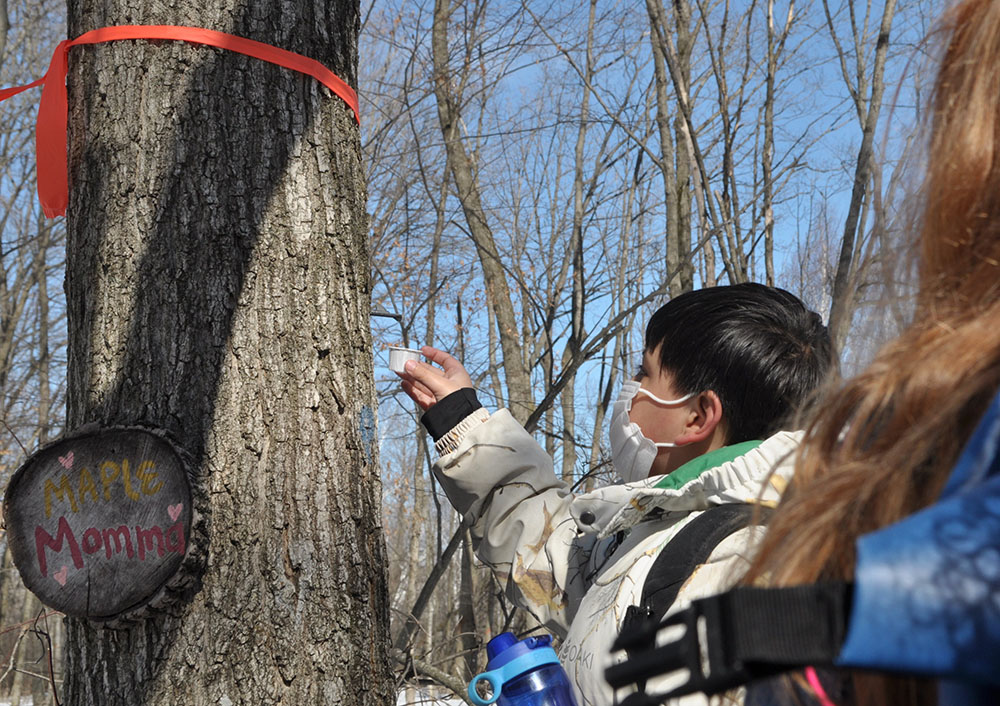
Maples sound great: they’re used in a variety of string and woodwind instruments.
Maples are a vital early spring pollen resource for bees.
When you rake those Maple Samaras (the helicopters) don’t just throw them away! They’re packed with protein and carbohydrates – roast them, sauté them, boil them – enjoy!
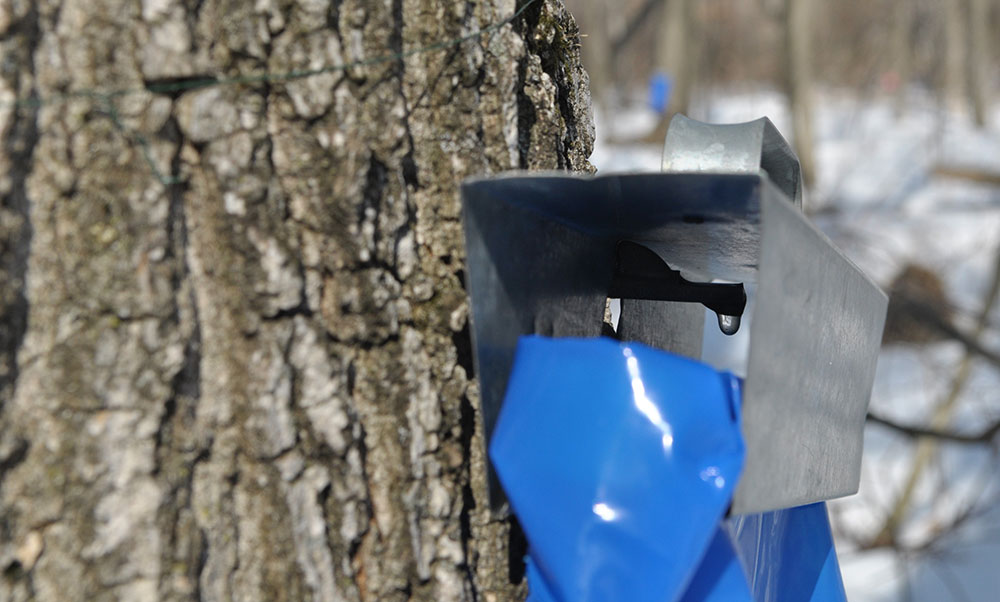
Trees other than maples can be tapped such as Black Walnut, Yellow Birch, Paper Birch, Silver Maple, Red Maple, Box Elder, Black Maple, Norway Maple (non-native; not recommended for planting). However, not every tree is safe to tap. Confirm definitively that your tree is safe to tap before ingesting any sap or syrup.
If you don’t have a Maple tree or other tap-able option – volunteer to collect sap with us at Riveredge!
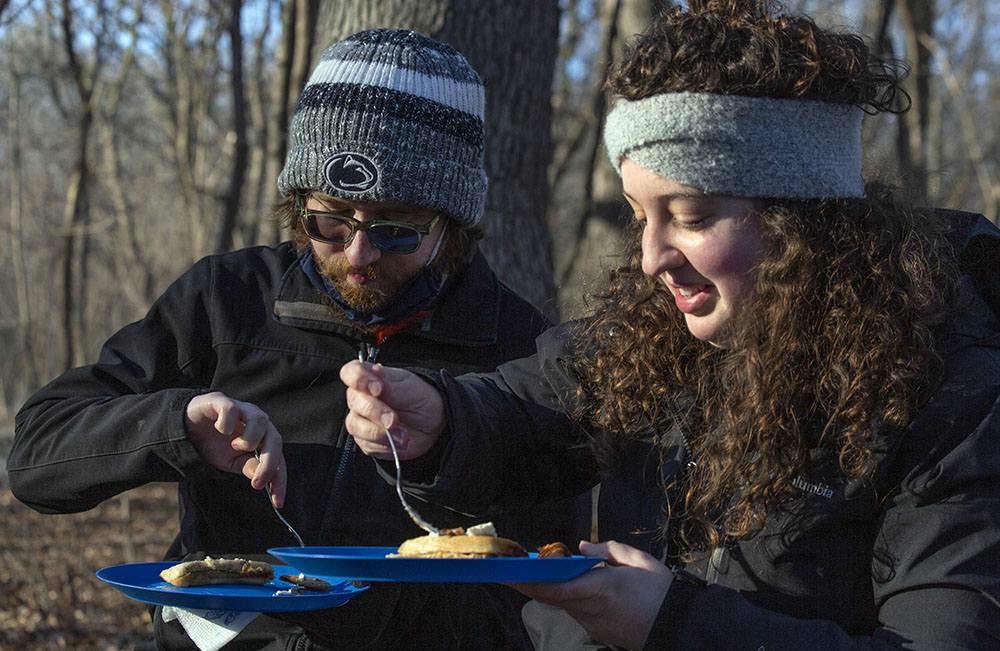
For more information go to any of the nature centers’ websites:
*From Braiding Sweetgrass: Indigenous Wisdom, Scientific Knowledge, and the Teachings of Plants by Robin Wall Kimmerer (adapted).
Kacey Tait is the Inquiry-based Curriculum and Instruction Manager at Riveredge Nature Center. Urban Ecology Center and Riveredge Nature Center are project partners of A Wealth of Nature. All photographs by Project Director Eddee Daniel, except as noted.

